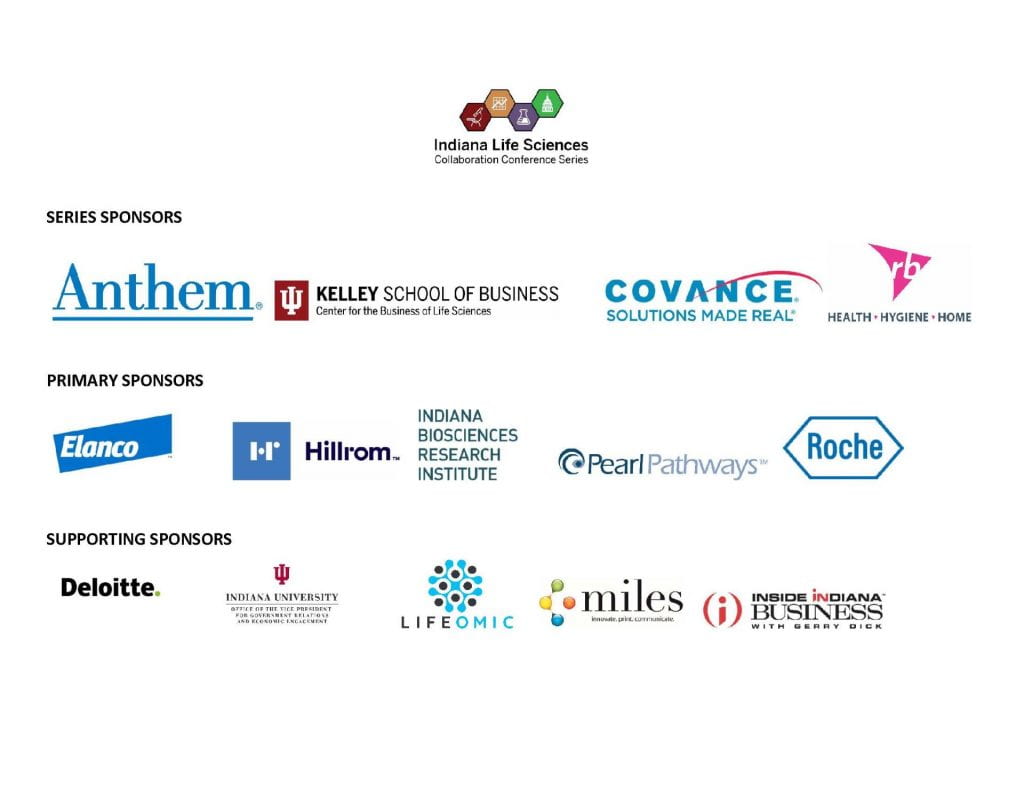
Summaries by Carson Baker
Undergraduate Major in Biotechnology
To view recorded files, click on the presentation title.
Keynote Presentation – House Calls: from Buggies to Bandwidth at the Dawn of Telemedicine
Dr. Bill Hanson, Chief Medical Information Officer at Penn Medicine, University of Pennsylvania Health System, and Professor, Anesthesiology and Critical Care, University of Pennsylvania
In his presentation, Dr. Hanson gave a brief history of telemedicine to begin the discussion. He touched on the first methods of telemedicine and how they advanced from the use of the telegraph to order medical supplies in the 1860’s to the use of carrier pigeons to transport medical specimens in the 1970’s.
He then spoke more about what telehealth is exactly and the different modalities that are involved. These modalities include live or synchronous telehealth, store and forward or asynchronous telehealth, remote patient monitoring, and mHealth. All of these modalities require zero patient and practitioner contact by using telecommunications or the transmission of patient data via a secure channel, such as EPIC, to the practitioner. He also mentioned the numerous apps that are available for patients to use such as pregnancy related apps and even breast cancer apps.
Dr. Hanson then explained how he and his team have evolved telehealth at Penn Medicine since 2006. Having many different programs, such as the Center for Connected Care and the Network Telemedicine, Hanson was able to create the largest program in the nation of telemedicine. Another program, the Virtual Urgent Care program “ONDEMAND” helped Penn Medicine to cut down on unnecessary urgent care visits for its staff, so the program was then extended to patients.
With regard to COVID-19, Penn Medicine really ramped up their telemedicine programs in order to prevent the spread of the virus. Within one week of the virus in the U.S., the number of telemedicine visits at Penn went from 300 to a little over 15,000 visits. This being quite remarkable since the majority of the country was scrambling to figure out solutions for medical visits.
To finish up his discussion on how telemedicine has evolved and what it is doing currently in the wake of COVID-19, Dr. Hanson explained how Penn was ready to dispatch its telemedicine efforts at the onslaught of the pandemic. Now, he says, telemedicine is gearing up for the “new normal” of the future.
Panel- Has Telemedicine Finally Come into Its Own?
Moderator: Stephanie Grinage, Vice President for Advancement, Indiana Biosciences Research Institute
Panel Members:
- Christopher McCann, Chief Executive Officer, Current Health
- Kris Kinghorn, Acute Care Nurse Practitioner, Community Health Network
- Dr. Stephen Friedhoff, Senior Vice President for Clinical Operations and Products, Anthem Diversified Business Group
- Dr. Jennifer Sullivan, Secretary, Indiana Family and Social Services Administration
Kris Kinghorn led off the panel, giving a brief introduction to telemedicine and virtual healthcare speaking on key points such as the convenience of both services and time reduction between patients and physicians. Although there were new-found pros that came along with telemedicine, a couple of cons followed along. Kris mentioned how some healthcare providers were let go, including nurses and medical assistants, due to the lack of a need for their positions.
The second panelist speaker, Chris McCann who is also the founder of Current Health, spoke about how they strive to obtain as much data about the patient as possible. Current Health does this by continuously monitoring patient’s vitals via SMS-based monitoring. They also use clinical algorithms to identify any risks to the patients, and then patients can meet with physicians virtually in order to be treated. All of these services combined through Current Health, physicians are encouraged to step in because of the efficiency of Current Health.
Dr. Stephen Friedhoff, from Anthem Diversified Business Group, spoke thirdly regarding the payer perspective of telemedicine. According to Anthem’s claims data, telemedicine increased with them about 60%. He spoke about how behavioral health was one of the groups that increased the most since COVID-19. Dr. Friedhoff touched on how simplicity was key for
the current evolution of telehealth since patients and physicians were tired of downloading apps and remembering passwords. With his perspective of providers, Stephen mentioned that telehealth was in fact reimbursed although it was not utilized much before COVID-19.
The final panelist was Dr. Jennifer Sullivan who is the secretary of the Indiana Family & Social Services Association or the IFSSA. IFSSA works mostly with patients who use Medicaid and use social drivers of health to help determine the optimal treatment for those patients. Dr. Sullivan gave an example of a young woman who had a scheduled mental health visit that was in-person, but her car would not start. This prompted Dr. Sullivan transferred the patient into a telehealth visit instead so that she could focus on her mental health and then worry about her car trouble. She explained that this was just one example of how IFSSA has been flexible in order to meet patients’ needs. However, the amount of patients who still have no access to proper bandwidth and devices for telehealth is fairly high for these low-income individuals which is one problem that IFSSA faces with this dawn of telemedicine.
Keynote- Sponsor Oversight of Decentralized Clinical Trials
Eric Pittman from the US FDA was the keynote speaker for this discussion and gave a brief overview of his role at the FDA and how this has changed with the structure of virtual clinical trials.
He mentioned that regulations, for the most part, remain the same with decentralized clinical trials. The quality and integrity of the data are still the focus of clinical trials no matter if it is performed in-person or via a telehealth visit.
Pittman stated that decentralized clinical trials are heavily involved with mobile technologies such as cell phones, smart watches, mobile healthcare providers, and telemedicine of course. He also mentioned briefly how virtual trials are performed on models and decentralized trials refer to clinical trials which use digital technologies.
Decentralized clinical trials also involve different ways of making sure the subjects receive the products that are used for the trial and how they consent to being in the trial, but the overall outcome of obtaining data remains static throughout this process. Local healthcare providers may be used for exams and collection of samples. Electronic informed consent and electronic clinical outcome assessments are performed instead of forcing the patient to travel to the laboratory. Shipping the investigational product, or the IP, to the patient directly or intermediary is also needed for decentralized clinical trials.
Eric touched on the benefits of decentralized clinical trials such as efficiency at a lower cost, the diversity of subjects, more frequent or even continuous measurement, and more advantages in geographically dispersed subjects. The challenges of decentralized clinical trials, however, go hand-in-hand with these types of trials. The common problem of internet
infrastructure and limited experience with this type of approach are a couple of the challenges that the FDA has to deal with in order to complete trials that are decentralized.
So, along with these challenges, there is a clear need for innovation of the methods for decentralized clinical trials. Eric stated that these include technical support, security of smart tools, the flow, access, and control of data, and regional and legal differences in telehealth.
Lastly, Eric gave a brief overview of guidance that the FDA is sponsoring for decentralized clinical trials which includes remote monitoring. He mentioned how this involves monitoring data early and often and how communication across sites needs to be done effectively.
All in all, decentralized clinical trials are a current method of receiving data for the trials while also maintaining COVID-19 protocols of staying at home and social distancing. This new era for clinical trials and the FDA still needs some fine tuning, but with time and effort, can be accomplished.
Fireside Chat – Virtually Transforming Medicine
Moderator: JJ Spegele, Vice President, CLS Business Systems and EPMO, Covance Central Laboratory Services
- Kara Mezger, Director, Clinical Operations, Cook Research Incorporated
- Nicole Sheetz, Director, Clinical Systems and Supply Planning (CSSP), Clinical Design, Delivery
- and Analytics (CDDA), Eli Lilly and Company
- Leslie Thomas, Director – Development Design Center (DDC) & Digital Health & Innovation, AbbVie
Nicole Sheetz, from Eli Lilly and Company, was the first panelist to give her insight into decentralized trials and how Lilly have improved their efforts into this realm of clinical trials. She mentioned how COVID-19 has certainly amped up these efforts due to the immediate need for some form of virtual clinical trial. Some of the first couple of issues that Lilly had to overcome were the informed consent forms and protocols that would allow for more fluidity with these types of trials. Nicole also spoke about making the virtual programs for patients more familiar much like most social media apps that are on the market nowadays, which was met with increased uptake by patients.
The following panelist giving her perspective into these trial settings was Leslie Thomas from AbbVie. Leslie agreed with Nicole on the amount of effort both companies have had to put in over the course of almost a year now due to COVID-19. She also stated that AbbVie has tried to include a plethora of digital methods to ensure the efficiency of the trial itself. She also mentioned how these methods are being used for the patient, or subject, in order to drive them away from having to transport themselves to the brick and mortar site of the trial. Some of the struggles that Leslie mentions AbbVie of currently having are the fact that some clinical trials were not decentralized and are now having some difficulty shifting over. She also mentioned that the continuation of care that is provided, albeit being virtual, is being heavily embraced by patients, especially since telemedicine is being used more frequently now than ever.
The final panelist was Kara Mezger from Cook Research Incorporated where she provided her perspective from the medical device world. She briefly mentioned how the obtaining of patient samples, such as blood work, is still difficult and that Cook still needs to work on fixing those hiccups. However, the overall decentralized clinical trials in the medical device space is relatively the same with that of the pharmaceutical space. She also stated how even the older demographic of patients in the current state of these trials are adapting positively to the virtual telemedicine network and this gives Cook hope for the future.
Many Thanks to the Following Conference Sponsors:

Leave a Reply